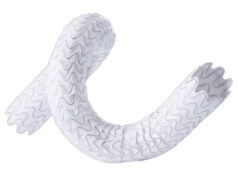
“When providing a 24/7 interventional radiology [IR] trauma service, sometimes our procedures are expected to be concluded in few minutes. That’s why it’s important that we approach patients with a clear strategy,” said Anna Maria Ierardi (University of Milan, Milan, Italy), speaking to Interventional News ahead of her presentation titled Minimal IR “survival kit” within trauma care.
Ierardi’s talk will appear during the Trauma team and the role of IR session at this year’s Cardiovascular and Interventional Radiological Society of Europe (CIRSE) annual scientific congress (14–18 September, Lisbon, Portugal). Setting out her objectives, Ierardi described what variables contribute to a successful IR trauma service.
“Our team is often faced with unpredictable situations in which time is crucial,” she detailed. “For us, it’s mandatory to have every tool available in order to choose the most suitable technique and to go with what we are most comfortable with.” Among the devices used in this setting, Ierardi defined what is needed to perform resuscitative endovascular balloon occlusion of the aorta (REBOA)—a procedure for patients with life-threatening bleeding not responding to resuscitative manoeuvres.
“A REBOA kit includes a needle, a sheath, guidewire, and balloon. In my opinion, to perform REBOA in a trauma setting, it should be a requirement to be able to get the access with ultrasound guidance,” Ierardi said. “You are faced with the most unstable and shocked patients without arterial pulses, so it’s important to be familiar with ultrasound guidance.”
In modern hospitals, the hybrid trauma room is equipped with a sliding computed tomography (CT) scanner—a feature which she stated is becoming more widespread across European and international centres. “This is the ideal situation,” she explained, “with this set up, specialists don’t need to move the patient for a CT, so when the patient arrives, they do not need to be mobilised until treatment is concluded, when they are then transferred to the intensive care unit”.
Another crucial aspect of the IR trauma team is cooperation between personnel, Ierardi shared. She believes that cooperation between trained interventional radiologists who usually work together on both elective and trauma cases makes a successful team. “It’s so that they know each other and are confident that they work in an effective and complementary way. Good results are dependent on the team being tight-knit.”
Ierardi went on to describe the differences in skillset between interventional radiologists who deal with elective cases and those who deal with trauma patients, stating that the latter, in her opinion, must be “very experienced”. “A good background— equating to long-term experience as an interventional radiologist—should translate well to the fast-paced environment that trauma care demands,” she added.
During her presentation, Ierardi will describe memorable cases from her centre that exemplify the scenarios her IR trauma team often encounter. Reflecting on how these cases went, Ierardi shared that often, cases that occur during the night are harder to manage.
“A big problem in this setting is that interventional radiologists are usually on call during the night. During the day, when all specialists are on-site, we can all be a part of the decision-making process along with orthopaedics, surgeons and anaesthesiologists,” Ierardi said. However, during the night or over the weekend, interventional radiologists are usually called in and must travel to the hospital when the diagnosis is already finalised and the indication for embolization has been determined by specialists. In most cases, the result is that the delivery of treatment is inevitably delayed, she said.
In setting out the “modern reality” of the IR trauma setting and the crucial elements that make up a 24/7 service, Ierardi invites all attendees to map their teams’ successes and failures to outline where improvements can be implemented to better approach the most critical of cases.













